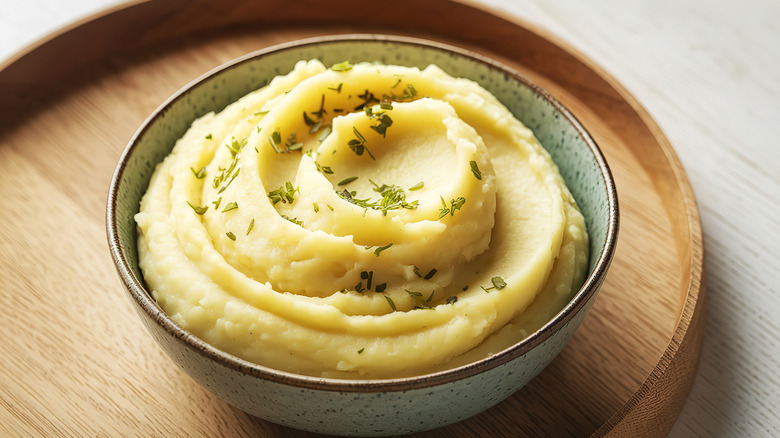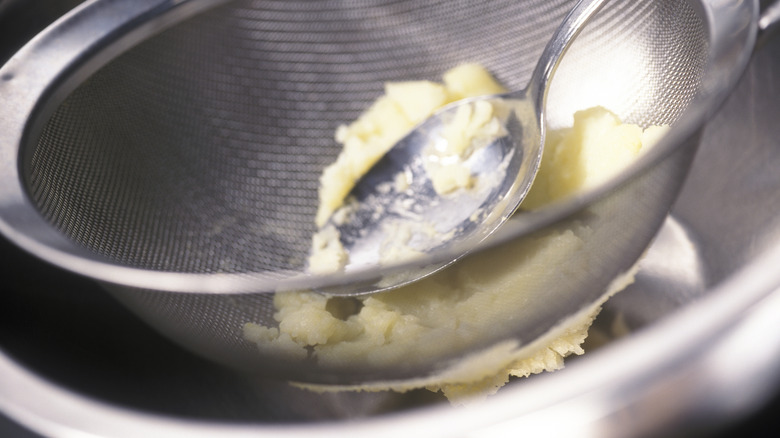No Potato Ricer For Mashed Potatoes? Reach For One Common Kitchen Tool
Although a classic tableside dish, mashed potatoes entail a surprisingly laborious preparation. Common mistakes to avoid when making them range from selecting the wrong spuds to boiling and — especially critically — smashing the potatoes into smithereens (or puree). While the ideal texture varies per diner, typically, most prefer the dish on the smoother side. Subsequently, cooks may reach for a ricer to achieve ideal spud consistency, passing potatoes through the machine to yield a soft and uniform mixture with a perfect touch of airiness.
Unfortunately, potato ricers aren't used for many other kitchen tasks, nor are they very fun to clean, either. Missing the tool in your culinary lineup is understandable, so you might look elsewhere for solutions. Thankfully, you can turn to a strainer — a much more readily available option — to craft tasty mashed potatoes, too.
The technique's easy-peasy. First, boil the spuds to a soft texture, noting which potatoes to use for a thick versus a fluffy mash. Next, cut them in half, then simply press them through the mesh (don't forget a vessel underneath to catch the starchy tastiness!). Employ a utensil like a fork, spoon, or even a towel to extrude all the flesh — the potato skin will remain in the strainer. Once done, simply mix the resultant potatoes with cream or butter, and you'll have a batch of fluffy mashed potatoes ready to enjoy.
Stick to using a strainer for fluffy mashed potatoes
While searching for other potato ricer alternatives, it can be tempting to opt for easy methods like a food processor, potato masher, stand mixer, or simply a fork. Each technique comes with its own dedicated fans, but if you're after the smoothest and airiest mashed potato texture, it pays off knowing the best (and worst) kitchen tool for mashing potatoes.
Among the options, the processor produces the starchiest, gooiest potato mash — not a hint of delicate wispiness a strainer provides. Meanwhile, a potato masher (an especially common choice) yields a nice-tasting batch, but one on the chunkier side, without the refined uniformity of a ricer or strainer. And with a stand mixer, you'll get a texture approximately halfway between a potato ricer and a food processor.
So sure, the strainer entails a bit more work; you'll need to slice potatoes in half and exude them one by one. However, for a commonplace kitchen tool, the resultant texture shines above the competition. Plus, opposed to a potato ricer, even the clean-up's easier, too. Potato starch droplets won't be flying around while you're pressing, and the resultant mash is all conveniently contained in a strainer, rather than smooshed into the ricer. So next time you're crafting a batch, keep this handy tool in mind.


